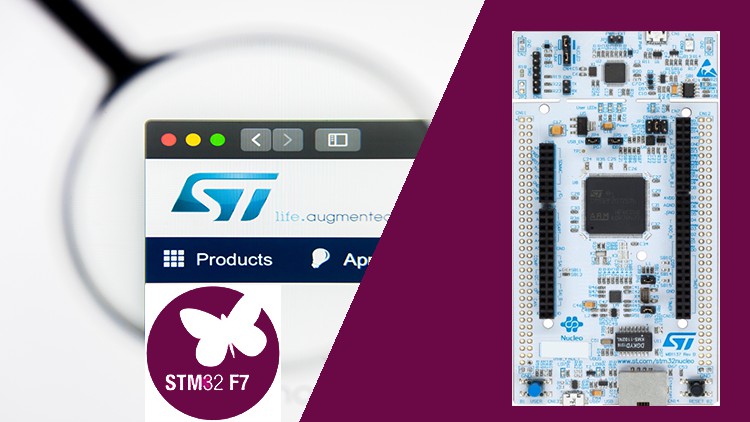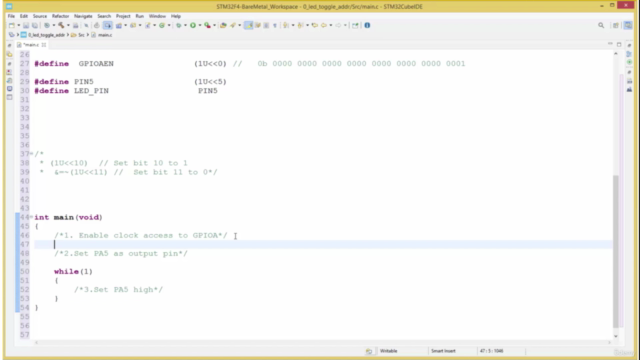ARM Cortex-M7 STM32F7 Bare-Metal Programming From Ground Up™

Why take this course?
based on the narrative provided, here's a structured outline for the course content that aligns with the philosophy of avoiding copy-paste and building understanding from scratch:
Course Title: Bare-Metal Microcontroller Programming: From Zero to Hero Without Copy-Pasting
Introduction:
-
Introduction to Embedded Systems
- What are embedded systems?
- Role of microcontrollers in embedded systems
- Importance of understanding low-level programming
-
Overview of the Course
- Objectives and learning outcomes
- Prerequisites and requirements for the course
- Explanation of the no copy-paste approach
Module 1: Understanding the Documentation
-
Introduction to Datasheets and Reference Manuals
- How to find and access chip documentation
- Navigating ARM Cortex microcontroller documentation
- Understanding the organization of a datasheet
-
Deep Dive into Microcontroller Architecture
- Overview of the ARM Cortex-M architecture
- Introduction to the AHB, APB bus systems
Module 2: Memory and Peripheral Addressing
-
Understanding Flash, RAM, and Registers
- Segments in microcontroller memory space
- Difference between code flash, data flash, SRAM, etc.
-
Mapping Peripherals to Registers
- How to find peripheral addresses in the datasheet
- Defining peripheral registers in code
Module 3: CMSIS Explained
-
Introduction to CMSIS
- What is CMSIS and why it's used
- Setting up a development environment with CMSIS support
- Using CMSIS to access peripherals
-
CMSIS Core and DSP Features
- How to use CMSIS core functions
- Overview of CMSIS DSP functions (if relevant to the MCU)
Module 4: Developing Peripheral Drivers
-
Analog-to-Digital Converter (ADC) Driver Development
- Understanding ADC registers and operations
- Step-by-step driver development for a specific ADC example
-
Serial Peripheral Interface (SPI) Driver Development
- SPI registers, modes, and operation
- Implementing a SPI communication protocol
-
Inter-Integrated Circuit (I2C) Driver Development
- I2C addressing, clock stretching, and data transfer
- Developing an I2C driver from scratch
-
Nested Vector Interrupt Controller (NVIC) Configuration
- Understanding interrupt vectors and priority levels
- Configuring interrupts for efficient task handling
-
General Purpose Timer (TIM) Driver Development
- Timer registers and counting modes
- Creating a timer driver for precise timing operations
-
System Tick Timer (SysTick) Configuration
- Setting up the SysTick timer for periodic interrupts
- Using SysTick for task scheduling
-
General Purpose Input/Output (GPIO) Configuration
- GPIO registers and pin configuration
- Writing a GPIO driver to control external devices
Module 5: Practical Application and Project Work
-
Integrating Peripherals into a Complete System
- Designing an application that uses multiple peripherals
- Interfacing with sensors, actuators, or other peripheral devices
-
Debugging and Testing Your Code
- Using debugging tools to step through your code
- Writing test cases for your drivers
-
Final Project: Building an Embedded Application
- A comprehensive project that integrates all learned concepts
- Designing, implementing, and testing an embedded system from scratch
Conclusion:
-
Recap of Key Takeaways
- Summarizing the importance of understanding low-level programming
- The benefits of developing peripheral drivers without relying on copy-paste code
-
Next Steps and Continued Learning
- Resources for further study
- Community and support networks for continued learning
-
Course Evaluation and Feedback
- Encouraging student feedback to improve the course
Additional Resources:
- Access to forum or community support
- Supplementary materials and documentation
- List of recommended books, tools, and additional online resources
This course is designed to take students from a beginner level to a point where they can confidently develop their own bare-metal drivers for various peripherals on an ARM Cortex-M based microcontroller, without resorting to copying code from elsewhere. The emphasis on understanding the hardware and its interaction with software ensures that students not only know how to write the code but also why it behaves the way it does.
Course Gallery




Loading charts...